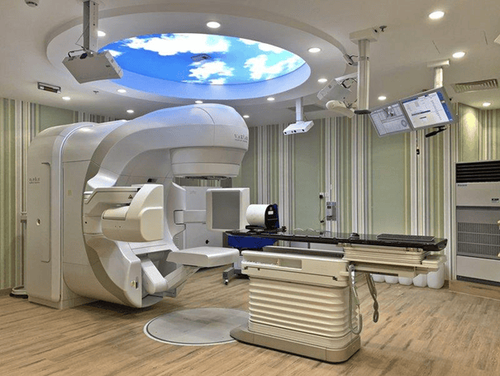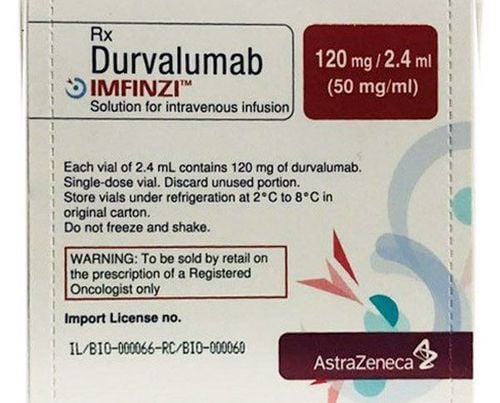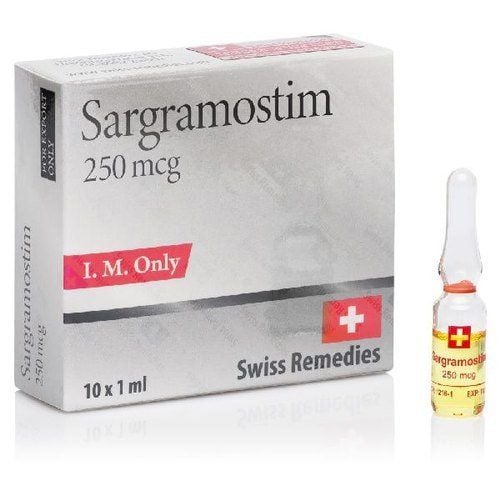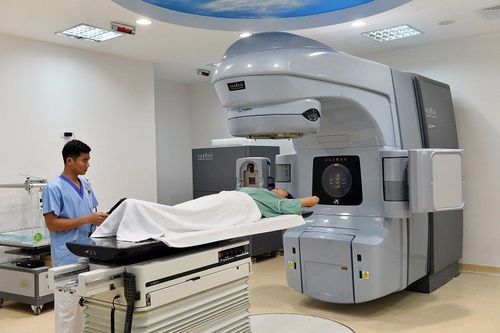This is an automatically translated article.
The article was professionally consulted by Specialist Doctor II Bui Le Phuoc Thu Thao - Radiotherapy Doctor - Oncology Center - Vinmec Central Park International General Hospital.Dose-modulated radiation therapy helps increase the ability to kill tumors while reducing side effects of radiation therapy, improving the quality of life for patients. However, because there is a very large dose difference between the treatment volume and surrounding healthy tissue, which requires precision in the treatment process, it is necessary to combine with radiotherapy under image guidance.
1. What is dose-modulated radiation therapy?
Intensity Modulated Radiation Therapy (IMRT) is an advanced radiation therapy technique that uses a linear accelerator to deliver a precise radiation dose to the tumor or volume to be treated. This technique uses reverse planning software to divide the projection fields into many small beams (beamlets) and modulate and control the intensity of these small beams to ensure the correct dose distribution according to requirements of the treatment volume.Advantages of dose-modulated radiotherapy compared to conventional radiotherapy, this technique allows to increase the dose at the tumor while limiting the dose to the surrounding healthy tissue and the ability to administer the dose at the same time multiple treatment volumes.
2. What is dose-modulated radiation therapy used for?
Currently, according to statistics at advanced radiation therapy centers in the world, beam intensity modulated radiotherapy is applied to 50-60% of patients with indications for radiation therapy. Intensity-modulated radiation therapy has obvious advantages over conventional radiation therapy in the treatment of many types of cancer, especially when the treatment volume is large and the tumor is located in areas with many important organs such as the head and neck. , mediastinum and subframe.Patients who should receive dose-modulated radiation therapy include: Patients with cancer of the head and neck (oropharynx, oral cavity) or cancer of the pelvis (rectum, uterus, cervix), in addition to lung cancer, esophageal cancer, prostate cancer, soft tissue cancer, cancer in children,...
3. How is dose-modulated radiation therapy performed?
Intensity-modulated radiation therapy process goes as follows:During intensity-modulated radiation therapy, the patient is examined by a doctor and explained to the best and most appropriate treatment technique. The patient was then subjected to a simulated CT scan in the treatment position. The treatment position must be most comfortable and easily repeated precisely many times during the patient's radiation therapy, so simulation technicians will use simulation tools to fix the position. patient's treatment. The CT image of the treatment position is called a simulation CT, this simulated CT image will be used to build a 3D image of the patient on the radiotherapy planning system. Doctors draw tumors and vital organs on this 3D image. The radiotherapy plan is built on 3D images by medical physics engineers after the tumor and vital organs are identified. The radiotherapy plan is then evaluated and quality checked on a very rigorous modern measuring system before being used to treat the patient. Typically, a course of IMRT radiation therapy lasts from 25 to 35 days, depending on the type of disease requiring radiation therapy. Before each treatment, after the patient is fixed in the treatment position by the radiotherapy technicians on the treatment table, images of the treatment posture are taken by pre-treatment posture inspection systems, If the position is completely correct, then the treatment will be performed immediately.
4. What are the advantages of dose-modulated radiation therapy at Vinmec Central Park Hospital?
Intensity Modulated Radiation Therapy (IMRT) in Vinmec is performed by good doctors such as radiation therapists with extensive national and international experience and track record. With the most modern radiotherapy machine in Southeast Asia, which Vinmec is the first hospital to own: Truebeam radiation therapy machine with the method of focusing radiation according to the shape and size of the tumor, without affecting the benign tissues. around. The radiation dose is highly concentrated, helping to increase the effectiveness of treatment and reduce side effects compared to conventional types of radiation therapy.This is a high technique that requires experienced experts and a rigorous consultation process to come up with a treatment plan and plan that Vinmec Central Park is confident that brings the highest treatment efficiency up to 95% for customers.

Máy xạ trị Truebeam của Bệnh viện Vinmec Central Park
VMAT volume-modulated radiotherapy (arc radiotherapy). Conventional SRS and SRS cranial radiosurgery using HyperArc technology; Radiosurgery using cone ICVI (Integrated Conical Collimator Verification & Interlock system). Localized radiosurgery of the body SBRT Control of tumor location Control of tumor position on imaging by day of treatment (IGRT image-guided radiotherapy). Controlling tumor movement according to breathing during radiation (4D radiation therapy) Radiotherapy for primary and metastatic brain cancer, single and multifocal Cancer Center - Vinmec Central Park International General Hospital fully equipped cancer treatment modalities: From surgery, radiation therapy, dose-modulated radiation therapy, chemotherapy... The diagnosis is made carefully: Blood tests, X-rays, ultrasound, resonance imaging words, myelogram, myelogram, biopsy, immunohistochemistry, diagnosis by molecular biology.
The treatment process is closely coordinated with many specialties: Center for Diagnostic Imaging, Laboratory Testing, Cardiology, Department of Obstetrics and Gynecology, Department of Endocrinology, Department of Rehabilitation, Department of Psychology, Department of Medicine. Nutrition, ... in order to bring to the patient the optimal treatment regimen and the most reasonable cost.
Specialist II Bui Le Phuoc Thu Thao has nearly 15 years of experience in direct treatment of cancer patients, especially radiation oncology and care for terminal cancer patients, palliative care mild and pain-relieving. Dr. Thao has participated in many advanced training courses at home and abroad such as advanced radiation therapy in Singapore and Korea, and the National Palliative Care Instructor training course of Harvard University. Currently, Dr. Thao is working at the Center for Cancer - Radiation Therapy, Vinmec Central Park International General Hospital.
Customers can go directly to Vinmec Central Park to visit or contact hotline 0283 6221 166, 0283 6221 188 for support.
MORE:
What you need to know about arc volume modulated radiotherapy (VMAT) Dosimetry to check the quality of the plan before arc volume modulated radiotherapy Assess the effect of the Collimator angle on the dose distribution in Volume-modulating radiation therapy for nasopharyngeal cancer














